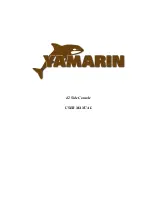
9
3.4 REFUELLING
Put off cigarettes when approaching refuelling point. Before starting to refuel, stop the engine.
Do not operate switches or accessories that may produce sparks.
If the boat remains in water, remove the separate tank from the boat for refuelling. This is to
avoid any spilling of fuel into the boat or water.
The fuel filling cap (text "FUEL") is located on the starboard side deck.
After refuelling fasten the tank properly in place under the rear seat, attach the fuel hose and
pump up the fuel line with rubber bulb before starting the engine.
There is room for one extra separate fuel tank under the rear seat. Never store reserve fuel
tanks in an unventilated space or unattached.
WARNING!
Fuel and its vapours are highly explosive. Extreme caution must be exercised
and these instructions must be followed when refuelling. The smell of fuel always
means that there is vaporised fuel in your boat. Because it is heavier than air, it
will NOT disappear without ventilation.
3.5 ENVIRONMENTAL CONSIDERATIONS
The sea, archipelago and lakes are unique and their conservation is a matter of honour for
every boat owner. Therefore you should avoid:
-
fuel and oil leakages
-
emptying garbage and waste into the water or on the shore
-
letting detergents and solvents get into the water
-
loud noise on the water or at the harbour
-
producing unnecessarily high wash in narrow passages and shallow waters.
Service the engine well and run it at an economical speed, which also keeps exhaust
emissions low.
3.6 MAINTENANCE AND WINTER STORAGE
Read the service operations explained in the engine manual. Perform them yourself carefully,
or let an authorized service shop do them for you.
Other equipment that require regular service are:
-
steering handle and controls
-
canopy (accessory)
Perform the service jobs for these following separate instructions and manuals.







































